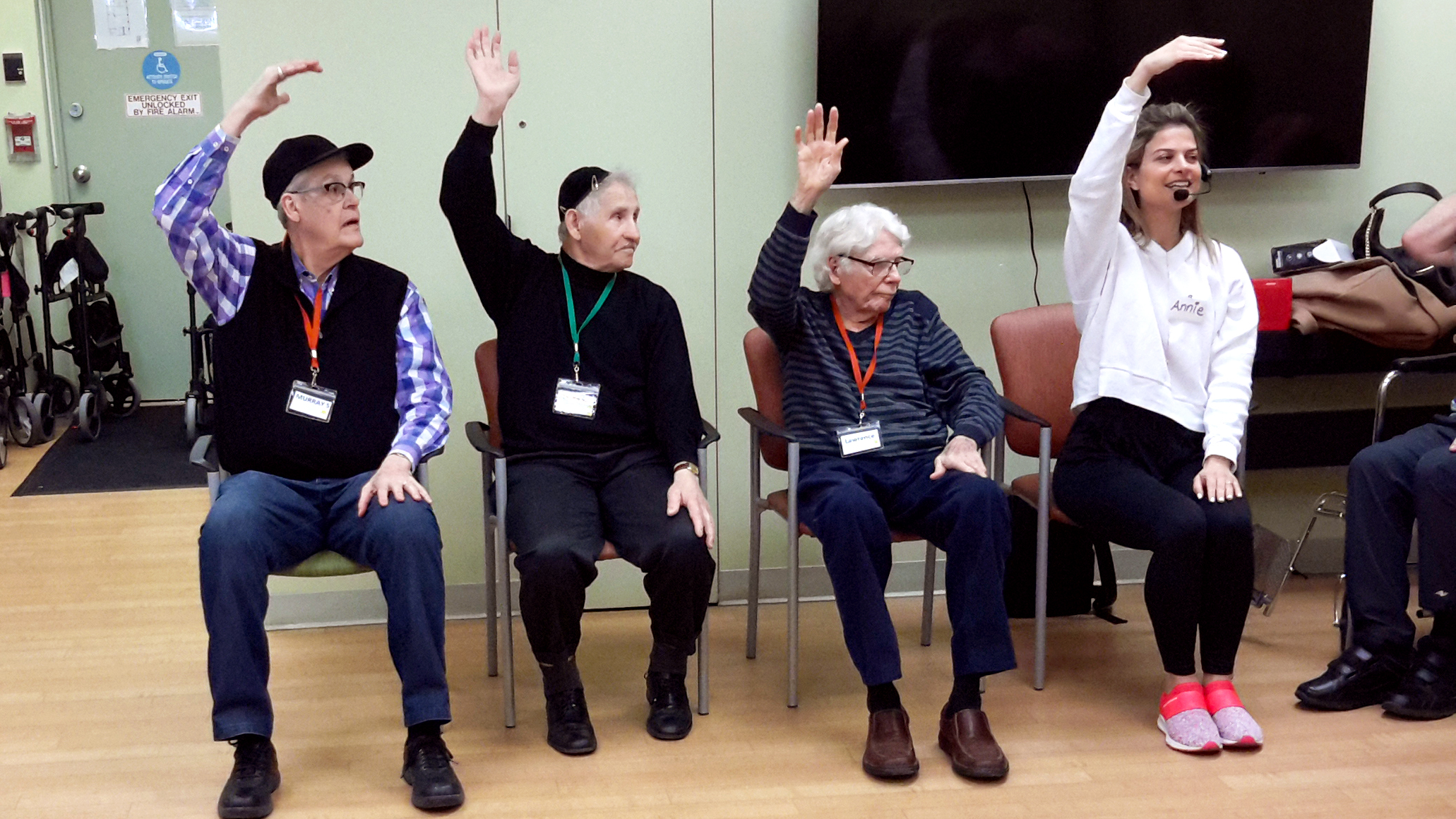
A new program at Circle of Care’s Adult Day Program is helping clients improve their health through the power of dance.
Beyond Tutus and Pointe Shoes: Building Brain Connections Through Ballet
As a graduate of Canada’s National Ballet School, dance instructor Annie Raphael brings her expertise to Circle of Care’s Adult Day Program to lead a surprising corps de ballet.
Seated in a circle, following along to Raphael’s direction, program participants flow through a 45-minute ballet class, designed to boost brain function among older adults living with Alzheimer’s and dementia. As the music shifts from lyrical to cultural to dynamic, dancers are encouraged to sing along—which helps regulate breathing—and the room is transformed into an inspiring moving picture.
The Science Behind the Benefits of Dance
The brain is the most complex organ in the human body, keeping us alive, taking in information from our surroundings, and performing complicated tasks. To keep our bodies functioning, the brain relies on approximately 100 trillion connections between its neurons, called neural pathways.
Neural pathways can be compared to roads. The tasks we perform often, like brushing our teeth, reading, or riding a bike, have stronger pathways, like highways. Tasks that we haven’t done in a long time, like speaking a childhood language, have weaker pathways, like overgrown forest trails. When people develop dementia, neural pathways become blocked or damaged, and their “highways” become closed roads. That’s why even the simplest tasks can become challenging.
Once a neural pathway is damaged, it’s gone forever. Fortunately, even though it’s not as easy to form new connections after the age of 25, it’s also not impossible. Neuroplasticity is the concept of forming new neural pathways by triggering neurons to “fire” together in a new way, over and over and over again, until a new pathway is formed. And physical movement, like ballet, is a great way to get neurons firing in new ways. The more participants dance, the stronger their new neural pathways become, giving them the ability to improve their balance and rhythm.
In addition, research shows that the benefits of dance extend beyond physical health. Mental comprehension and mood are impacted positively as well, as participants form connections between the instructions and visuals they are given, and the motions they are making.
From Stillness to Transformative Dance
For Raphael, the payoff is watching the transformation of participants over time. “I’ve had participants in my classes sit motionless and just watch me for weeks. Then one day there’s a breakthrough and they start to dance with full movement,” she says.
Circle of Care’s Adult Day Program is an opportunity for older adults living with dementias to get out and socialize in a supportive and caring environment. The program is run by a compassionate team of specially educated social workers, therapeutic recreationists and program assistants.


